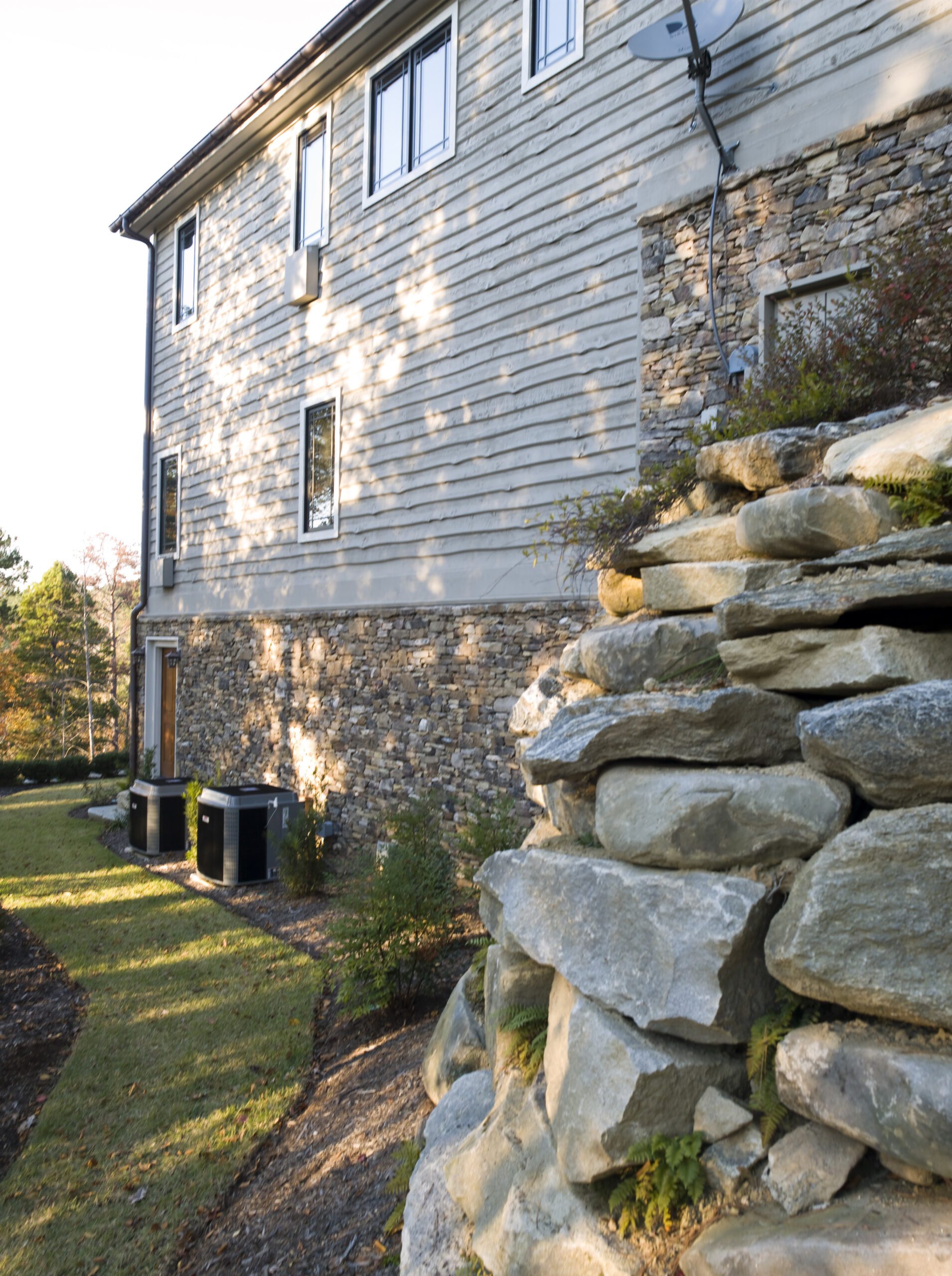Initial Consultation And Planning
The journey to your dream rock wall begins with a comprehensive initial consultation. Understanding your vision and needs is our top priority. We discuss your preferences, the intended use of the wall, and any specific design elements you desire. Following this, we conduct a thorough site assessment. This step is crucial for identifying any unique characteristics of your land, such as slope, soil type, and drainage, which can influence the design and installation process. With these insights, we can recommend the most suitable design options, ensuring that the rock wall not only meets your expectations but also complements the natural landscape.
Materials And Equipment Used
Selecting the right type of rocks is essential for the success and longevity of your rock wall. We offer a variety of stone options, each with unique textures and colors, allowing for personalized designs that align with your esthetic preferences. Our team will assist you in choosing materials that can withstand the elements and blend beautifully with the local environment. The installation process requires specialized tools and machinery to ensure precision and safety. We use advanced equipment such as excavators, stone cutters, and compactors to prepare the site and position each rock carefully. This approach guarantees a stable and visually appealing structure that will endure over time.
Installation Process
Building a rock wall involves several detailed steps to ensure it is both stable and visually appealing. We begin with site preparation, which includes clearing the area and leveling the ground to provide a solid base. This is followed by laying the foundation, where base rocks are carefully placed and compacted to ensure stability and evenness. Once the foundation is in place, we start the wall construction by stacking stones. We use either dry-stacking or mortar to secure each rock, depending on the design requirements. This method ensures that each stone is strategically positioned for maximum interlocking and durability. Proper back filling and drainage are essential to maintain the wall’s integrity. We use gravel for back filling and install weep holes to manage water flow, preventing buildup behind the wall. During construction, we pay special attention to the unique features of your property, such as uneven terrain and soil conditions. Our team is skilled at handling these challenges, ensuring that each rock wall is custom-built to withstand local environmental factors. The use of advanced equipment, including excavators and stone cutters, helps us achieve precise placements and a seamless look. We finish by adding decorative elements or vegetation that enhance the overall appearance of the wall. This careful attention to detail ensures that your rock wall not only serves its functional purpose but also adds beauty to your landscape. Each step is executed with precision to create a rock wall that stands the test of time.
Maintenance Tips For Longevity
To keep your rock wall in top shape, regular maintenance is crucial. Here are some tips to ensure its longevity: – Conduct Regular Inspections: Periodically check your rock wall for signs of wear and tear, such as loose stones, cracks, or shifts in alignment. Catching these issues early can prevent larger problems in the future. – Manage Vegetation: Remove any weeds or plants that are growing too close to the wall. Roots can penetrate and destabilize the structure, leading to potential damage over time. – Ensure Proper Drainage: Keep drainage systems like weep holes clear to prevent water buildup behind the wall. Water accumulation can create pressure and weaken the structure. – Address Issues Promptly: If you notice any stones that are out of place or signs of erosion, take immediate action. Contact a professional to make necessary repairs before the problem worsens. – Seasonal Care: During colder months, freeze-thaw cycles can impact your rock wall. Ensure that the wall is clear of ice and snow to minimize stress on the structure. – Control Soil Erosion: Monitor the surrounding area for any signs of soil erosion that can affect the wall’s stability. Adding plants or ground cover can help anchor the soil and prevent erosion. – Protect Against Pests: Keep an eye out for pests that may burrow near the wall. Their activities can undermine the foundation of the structure, causing instability. Regular upkeep of these aspects will help your rock wall remain a beautiful and enduring feature of your landscape.

